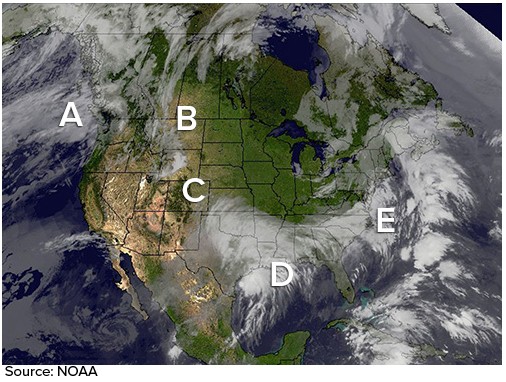Which of the following locations would best represent a storm track characterized as bringing cold moist air to inland Canada?
A. A
B. B
C. C
D. D
E. E
Answer: A
You might also like to view...
Human adaptations to and uses of the natural environment
A) have been occurring for hundreds and thousands of years. B) no longer occur with globalization of the late 20th century. C) began with the Industrial Revolution. D) almost never result in pollution or environmental degradation. E) occur in only hearth areas—many regions of the world remain pristine and untouched by human activity.
Which of the following is an example of a persistent pollutant?
A. Bacteria in treated sewage sludge that is spread on fields. B. DDT which is found in soil years after its use but is eventually destroyed by soil bacteria. C. Organophosphate insecticides that kill insects for several days but do not bioaccumulate in food chains. D. Carbon monoxide that breaks down after reacting with oxygen. E. None of these is an example of a persistent pollutant.
The surface mixed zone is characterized by ________
A) high density water near the surface that rapidly decreases in density with depth B) a mixture of temperatures and densities to a depth of about 300 to 450 meters depth. C) low density water near the surface that rapidly increases in density with depth D) a rapid change from warm temperatures on top to cold temperatures at a depth of about 300 meters E) nearly constant temperatures to a depth of about 300 meters
What is the most important geologic agent in eroding, transporting, and depositing sediment?
A. wind B. ocean waves C. glaciers D. flowing water